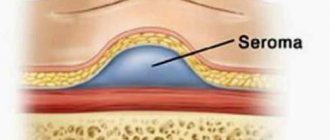Benign tumors of the pharynx, which include a cyst on the tonsil, are quite common, especially in people with chronic tonsillitis and adenoids. Such neoplasms are most often benign in nature. But, despite this, experts recommend using predominantly surgical treatment, since excessive tissue growth can at any time lead to malignancy of cells. In addition, cysts on the tonsils create obstacles to swallowing and breathing, often cause exacerbation of chronic ENT pathologies and reduce a person’s quality of life.
Tonsils are a filter for pathogenic microorganisms and perform a protective function. But with excessive tissue growth, they turn into a source of chronic infection. Cysts on the tonsils are treated mainly surgically, since conservative therapy is ineffective.
At the CONSTANTA Clinic in Yaroslavl, tonsils and cysts are removed by experienced otolaryngologists using modern endoscopic equipment. Endoscopy in otolaryngology is the gold standard of surgical treatment, which is characterized by minimal trauma and maximum efficiency. We provide our patients with qualified services and assistance from wide-ranging ENT specialists.
Why do cysts appear on the tonsils?
Only a qualified specialist can indicate the exact cause of the appearance of a cyst on the tonsil, using examination data and a comprehensive examination. Chronic infectious and inflammatory processes in the oropharynx come first in this disease. If the patient suffers from diseases such as tonsillitis, sinusitis, laryngitis, in which there is pronounced swelling of the mucous membrane in the mouth and nose, then favorable conditions are created for tissue proliferation and the growth of pathological neoplasms.
But there are other reasons that lead to the growth of cysts on the tonsils:
- changes in hormonal levels;
- weakening of the body's defenses;
- bad habits (smoking, drinking alcohol);
- tonsil injuries;
- work in hazardous industries associated with inhalation of polluted air poisoned by chemical vapors;
- sluggish inflammatory process in the oropharynx;
- development of autoimmune pathologies;
- untreated tonsillitis.
Routes of infection
The viral infection is transmitted from person to person through close contact:
- sexually (the risk of getting the virus triples with promiscuity);
- through kisses;
- by household means (in public places);
- through the birth canal to the newborn from the mother;
- for injuries, microcracks and other damage (self-infection).
sexually (the risk of getting the virus triples with promiscuity); through kisses; by household means (in public places); through the birth canal to the newborn from the mother; for injuries, microcracks and other damage (self-infection).
It is impossible to become infected with papilloma, you can only become infected with a virus, and how it behaves in the future depends on many external and internal factors.
Conducted research has helped to reveal that HPV is present in the body of almost 90% of the population of the entire planet. Infection is possible at any age and in several ways.
If we are talking about the development of papillomas in the mouth of children, then infection most often at this age occurs through vertical and household contact.
The vertical route is the transmission of the virus from a sick mother to her newborn child as it passes through the birth canal. At this time, the microorganism is able to get on the skin of the face, mucous membranes of the mouth and throat.
Among children, the most common route of transmission of HPV is still considered to be through household contact - transmission occurs through close contact, through toys, and when using the same hygiene items. Children often drink from the same cup, use the same spoon or fork, and can eat the same piece of fruit for several people - HPV is found in saliva and therefore in such cases it easily spreads and leads to infection.
HPV is transmitted through touch. Ways of infection with papillomavirus:
- sexual, regardless of the type of sexual contact (if the infected partner has warts located in the perineal area, using a condom does not exclude transmission of the virus);
- from mother to child during childbirth;
- household (general hygiene and household items);
- self-infection during depilation or shaving;
- through handshakes, kisses (if the papillomas are located in the contact zone).
How does the disease progress?
A cyst on the tonsils does not bother the patient for a long time. But as it grows, it begins to compress the surrounding soft tissues and can cause breathing problems, even asphyxia. Therefore, it is so important to contact specialists in a timely manner and carry out scheduled preventive examinations, especially in the presence of chronic ENT diseases.
Patients with cysts in the tonsil area present the following complaints:
- decreased quality of nasal breathing;
- feeling of a lump in the throat;
- pain and discomfort when swallowing food;
- sore throat;
- hoarseness of voice;
- frequent exacerbations of chronic diseases of the ENT organs and respiratory tract.
If you often suffer from respiratory viral diseases, tonsillitis, laryngitis, you need to consult a specialist who will conduct an examination using innovative equipment that allows you to examine the tissues of the hypopharynx with maximum efficiency. Based on the diagnostic data, the doctor makes a diagnosis and prescribes treatment.
If the tumor is often injured by rough food, it may begin to bleed. As a result, the patient will detect traces of blood in the saliva. This is an alarming sign that requires immediate consultation with a specialist. Cysts on the tonsils also occur in childhood. The child begins to complain of discomfort when swallowing saliva, sore throat on one side, and a change in voice. Often children begin to chew food poorly, clear their throats and are afraid of short-term breath holding.
If the tonsil cyst is small and not prone to active growth, a wait-and-see approach can be used. But when the tumor rapidly increases in size, it is necessary to undergo surgery as soon as possible.
Kinds
There are many varieties and classifications of papillomas.
Only with a visual examination can a doctor determine what kind of tumor it is and prescribe the correct treatment.
Age classification of papillomatosis:
- congenital or intrauterine;
- acquired through domestic or sexual contact;
- children's (juvenile);
- recurrent;
- adult, which occurs more often in men when the production of sex hormones decreases.
By degree of growth:
- in a certain area of the throat - limited appearance;
- in multiple areas - widespread;
- obstructive type, disrupting the air flow through the respiratory tract.
According to symptoms and state of respiratory tract functions:
- it is slightly difficult to inhale and exhale if there is hoarseness and noise during breathing - this is the first compensatory degree;
- shortness of breath, lack of oxygen, bluish skin, anxiety, cold sweat are characteristic of the second degree of decompensation;
- complete cessation of breathing, loss of consciousness occurs due to asphyxia in the third degree of papillomatosis.
Based on the presence of oncogenic properties, papillomas are divided into:
- benign;
- malignant.
congenital or intrauterine; acquired through domestic or sexual contact; children's (juvenile); recurrent; adult, which occurs more often in men when the production of sex hormones decreases.
in a certain area of the throat - limited appearance; in multiple areas - widespread; obstructive type, disrupting the air flow through the respiratory tract.
it is slightly difficult to inhale and exhale if hoarseness and noise appear during breathing - this is the first compensatory degree; shortness of breath, lack of oxygen, bluish skin, anxiety, cold sweat are characteristic of the second degree of decompensation; complete cessation of breathing, loss of consciousness occurs due to asphyxia in the third degree of papillomatosis.
benign; malignant.
The classification of papillomas is varied. Depending on the degree of growth, growths in the larynx can be limited, widespread and obstructive (limiting air access). Depending on the moment of infection, children's (juvenile) and adult papillomatosis are distinguished.
Based on the appearance of the formations, they are distinguished:
- Pointed - growths that tend to merge to form a single bumpy surface.
- Flat – areas with a grainy surface and unchanged color.
- Thread-like - easily injured formations on a thin stalk.
- Simple - pineal-shaped mobile papillomas with a flat base.
- Epithelial hyperplasias are small, soft and mobile growths of a reddish hue.
Complications of tonsil cysts
A cyst on the tonsil is a chronic source of infection that can behave in an unknown way, causing various complications. The neoplasm in the pharynx is constantly rubbed with food, which leads to the formation of a chronic inflammatory process. The longer the patient does not seek medical help, the longer the infection progresses; along with the bloodstream, infectious pathogens are carried to all cells and organs, disrupting their normal functioning.
A long-term infectious process is accompanied by general intoxication of the body. Toxins produced during the activity of pathogenic microorganisms disrupt the functioning of the liver and kidneys, provoke the development of chronic fatigue syndrome, reduce immunity and make a person vulnerable to even the most harmless infections.
Only an otolaryngologist can choose the treatment for a cyst on the tonsils, based on the results of pharyngoscopy. If the doctor suspects the development of a malignant process, a consultation with an oncologist will be required. Other studies may also be prescribed: rhinoscopy, audiometry, computed tomography and magnetic resonance imaging of the brain, otoscopy. In advanced cases, the tumor can grow into nearby tissues, including brain structures.
Diagnostics
Papillomatosis is diagnosed using several methods at once, allowing not only to determine the presence of growths, but also the location of their distribution, the degree of organ damage and size.
Diagnostic methods:
- visual examination by an otolaryngologist using a laryngoscope - a special device for examining the throat;
- examination of the throat using an operating microscope - microlaryngoscopy;
- radiography and computed tomography;
- to identify disturbances in the functioning of the vocal apparatus, in particular, the ligaments, laryngostroboscopy and electroglottography are used;
- analysis of material obtained from biopsy of growths;
- removed papillomas are examined for histology - the presence of cancer cells.
Blood must be taken for analysis.
Papilloma in the throat is detected by a doctor during a visual examination. To clarify the extent of the spread of the disease, it may be necessary to examine the larynx using a laryngoscope.
Infectious granulomas and malignant neoplasms give a similar visual picture, therefore, to clarify the diagnosis, a biopsy of the affected tissue is performed, followed by histological examination of the material. The patient may also be prescribed a blood test for HPV to determine the strain of the virus.
Treatment of tonsil cysts
Treatment of cysts can be either conservative or surgical. Often, specialists first prescribe effective drug therapy to relieve inflammation and prepare the patient for surgery. Conservative treatment of a cyst will not reduce its size, but can stop the active growth of the tumor and prevent complications. Treatment tactics should be selected by a competent specialist based on medical history, diagnosis and professional examination.
Conservative therapy for tonsil cysts includes the following measures and procedures:
- gargling with herbal decoctions, antiseptic solutions that disinfect tissues and have an anti-edematous and anti-inflammatory effect;
- physiotherapy: ultraviolet irradiation, massage, ultrasound - physiotherapeutic treatment methods are used to increase blood supply to tissues in the area where the tumor is located, to ensure lymph outflow;
- pumping out pus using hardware methods, which makes it possible to stop the development of the infectious process and the spread of infection to surrounding tissues;
- injection rinsing of the tonsils with anti-inflammatory drugs and antiseptics to cleanse plaque and purulent contents;
- strengthening the immune system with multivitamin complexes and immunostimulants;
- giving up bad habits that contribute to traumatization of the tonsils and the preservation of the chronic inflammatory process.
Some specialists practice opening the cyst and pumping out its contents. But, as a rule, the therapeutic effect does not last long and the tumor is filled with fluid again. Therefore, if the cyst has not disappeared after several weeks of active medical therapy, it is better to remove it surgically.
Surgeries for tonsil cysts
The smaller the size of the cyst, the easier it is to perform surgical treatment. Small neoplasms with a thin wall are usually opened and the contents are pumped out. In the future, treatment continues and consists of the use of anti-inflammatory drugs and high-quality antiseptics. If this technique turns out to be ineffective, a classic operation is performed, when a specialist removes the tumor itself or all the tonsils if they show signs of hypertrophy and do not perform their protective functions.
The extent of surgical intervention depends on the size of the tumor, the condition of the ENT organs and the general well-being of the patient. The operation can be performed either under local anesthesia or general anesthesia. As a rule, long-term hospitalization of the patient is not required. It is very important to remove the cyst completely to eliminate the risk of recurrence of the pathology in the future. If the tumor is large, actively growing and often worsens tonsillitis and other ENT diseases, then a tonsillectomy is prescribed - an operation to remove the tonsils.
In our Clinic, such surgical interventions are performed using high-quality endoscopic equipment. Often, tonsillectomy is the only correct solution for frequently recurring tonsillitis and cysts on the tonsils.
After surgery, the patient is under the supervision of specialists for some time. Doctors monitor the patient’s condition and, if problems occur, provide the necessary medical assistance. The first day after removal of cysts or tonsils, you must observe relative rest: sports, visiting baths and saunas, and public swimming pools are prohibited. These restrictions are necessary to prevent bleeding and prevent the development of infectious complications. Food should be warm and as gentle as possible. During the first weeks, you should not eat foods that can injure the oral mucosa.
In the postoperative period, specialists can prescribe medications whose actions are aimed at relieving sore throat, relieving signs of inflammation and preventing secondary infections. Local procedures for gargling and irrigating the throat with antiseptics are also prescribed. Antiseptic treatment of the wound remaining after surgery must be carried out several times a day.
You should be attentive to your well-being and if you have any complaints, contact your doctor. Surgeries to remove cysts are successful, but in any case, patients must visit an otolaryngologist for several more months so that the doctor can monitor the quality of healing of the mucous membrane and, if there is a risk of relapse of the disease, can take all necessary therapeutic measures.
If you follow all medical recommendations and avoid heavy physical activity in the first weeks after surgery, the risk of relapse of the disease and complications will be minimal. You can ask the specialists of our Clinic in Yaroslavl all your questions. We will be happy to advise you and help you even in the most difficult clinical situations. For this, doctors have everything they need: innovative technology of European quality, rich practical experience of otolaryngologists, professional knowledge.
Removal of a polyp in the throat: price
The cost of surgical treatment of a polyp in the throat depends on the method of intervention, stage and other factors. The price of this service is determined after a comprehensive diagnosis in accordance with the current price list at the Yusupov Hospital. Each patient has the opportunity to receive complete information about the scope of treatment measures and their cost.
For patients diagnosed with throat polyps, oncologists develop an individual treatment plan. The key to high quality medical services provided to patients at the Yusupov Hospital is an integrated approach to solving this problem.
Prevention of recurrence of tonsil cysts
After removal of the cysts, relapse of the disease may occur. To avoid this, it is necessary to prevent the occurrence of situations that provoke inflammation of the mucous membrane of the oropharynx. Try to promptly treat ENT diseases, especially tonsillitis, and avoid injury to mucous tissues. If you smoke, if possible, give up the bad habit or reduce the number of cigarettes you smoke to 1-2 per day. Tars and other substances contained in tobacco have an irritating effect on the throat and can provoke an exacerbation of sore throats.
If the patient has a history of frequent ENT diseases and relapses of tonsillitis, then the doctor may recommend removing the entire tonsil. A tonsillectomy will relieve you of chronic infection and many other health problems. But tonsil removal is carried out according to indications. You can talk about the need for total resection with the doctors of the CONSTANTA Clinic at your appointment.
If you have any questions or make an appointment with a specialist, please call: (4852) 37-00-85 Daily from 8:00 to 20:00
Sign up for a consultation
Reviews
- Svetlana F.: “After a sore throat, a child developed a papilloma on his tonsil. At first it was the size of a small pea, and then it became the size of a bean. The son began to eat poorly, be capricious, and cough frequently. Electric cauterization was prescribed. Everything went very quickly. My throat tingled a little after the operation. The child spat out the papilloma the next day. A week later we saw a doctor. Everything has healed. I hope she doesn't grow any bigger."
- Tatyana K.: “When I swallowed, I felt something was bothering me. She didn’t see anything in the mirror herself. I contacted an ENT doctor. He said it was papilloma and advised me to do cryotherapy. The procedure itself is painless. But after it, I initially felt worse. There was a feeling that the tonsil was swollen. A day later everything returned to normal. When the wound healed, there was also slight discomfort. Now everything has healed, but you need to see a doctor in a month so that there is no relapse.”
You may also be interested in information about what reviews there are about purulent plaque on the tonsils without fever and what can be done about such a problem.
It is impossible to get rid of the papilloma virus that has entered the human body. Decreased immunity activates the bacillus. The appearance of a growth on the tonsil causes discomfort, can cause shortness of breath, and provoke an exacerbation of chronic tonsillitis. Modern treatment methods make it possible to remove papilloma painlessly, without relapses.








